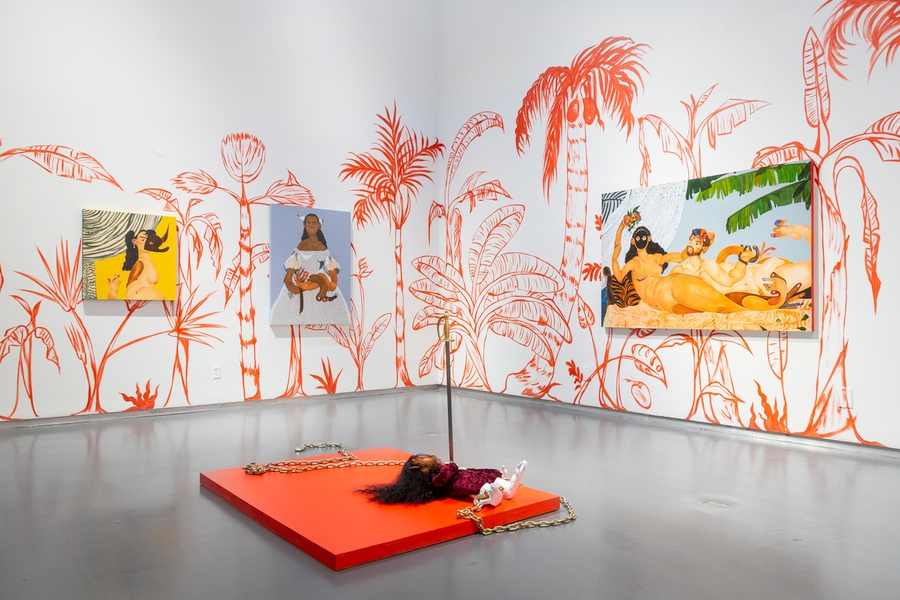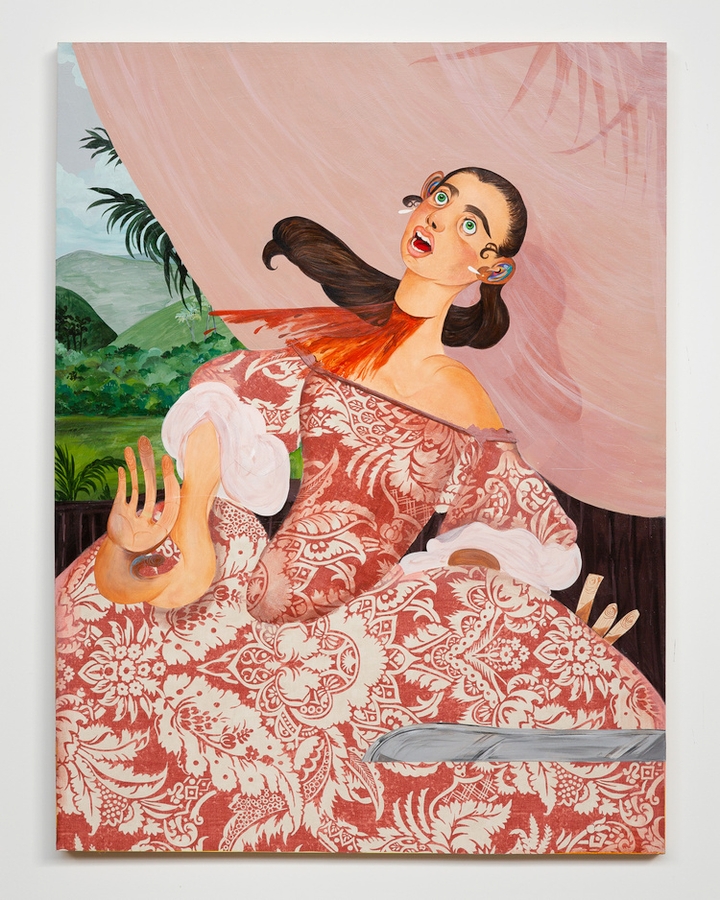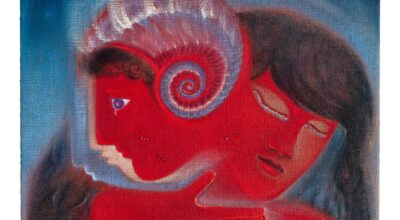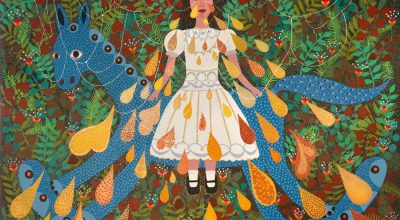
BONY RAMIREZ: MUSA X PARADISIACA
Thierry Goldberg presents Musa x Paradisiaca, Bony Ramirez’s first in-person solo exhibition with the gallery, following his online solo exhibition Grass under the wood. The artist fuses together Caribbean iconography and Renaissance styles to create works that reflect on the colonialist history and contemporary sentiments of the Dominican Republic, the artist’s home until age 13.
His painting technique is singular –he adheres life-size paper figures onto painted wood panels, creating layered works where figures blend into their backgrounds. The subjects of these portraits are bold and strange, yet eerily seductive. They are characterized by oversized and mysteriously contorted hands and feet, ears filled with rainbow swirls, and large, wide, doll-like eyes.
Behind Ramirez’s muses lie saturated, playful colors, or landscapes of quintessential Caribbean beaches, jungles, and paradisiacal symbols. Accompanying many of his subjects are still lifes with tropical fruits, shells, and plants like the “flamboyant tree” and plantains (scientifically, Musa x Paradisiaca). He uses the traditional elements of Renaissance portraiture, but adapts them with Caribbean iconography, rendering his works’ subject matter away from white gentry to those affected by European colonialism.



The works in Musa x Paradisiaca are divided into reflections on the past and present: the main level of the gallery is filled with works representing contemporary Dominican figures, and the works downstairs, tell the story of the tumultuous history of the country. Throughout both levels of the gallery, Ramirez’s drawn figures come to life as three toddler-size sculptures of children, each possessing the same physical features as the artist’s drawn figures.
The nine paintings upstairs depict present-day Dominican life while meditating on the history of the country’s past. In these works, Ramirez experiments with the background behind his subjects, veering away from the conventions of traditional portraiture to contemporary influences like abstracted tropical forests, shapes, and animations. Though more stylistic in their portrayals, these figures still carry with them the history of their ancestors on the island of Hispaniola (the island of Haiti and The Dominican Republic).
Through five paintings downstairs, Ramirez recounts the history of the colonization, slavery, and fight for sovereignty in The Dominican Republic. His retelling begins with the indigenous people, the Taíno. In Musa x Paradisiaca (2020), he portrays a Taíno woman with Dominican plants wrapped in her arms. Like in Renaissance portraiture, where the sitter is surrounded by symbols representing an intimate detail of their personal story, here Ramirez places the Taíno woman with symbols of her culture before the Spanish colonization.



In La Mentira/ The Lie (2020), he portrays a Spanish woman crossing her fingers in hopes of her country’s triumph over Hispaniola and the region, while in The Feast, Plantain and Fish (2020), a Taíno woman is seen next to a West African woman, alluding to the Spanish’s enslavement of both populations.
Meanwhile, No fue el final/ It was not the end (2020) shows a Spanish woman slashed along her neck, bleeding, and perhaps soon to be decapitated. And finally, in Ramirez’s last work in this historical retelling, he personifies the Dominican’s reclamation of power after their declaration of independence from the Spanish. In ¿Dónde están los limoncillos? (2020), a Dominican woman uses her beauty to assert her dominance over a white man who leans towards her, yearning for the limoncillos (limes) in her hand, only to be pulled away.
Though Ramirez has divided his works by time period, the confrontations with the region’s history are shared between them. Accordingly, his works insist that the past exists in the present more than meets our eye. Ramirez’s works show a new side of portraiture, one that tells not of those that wrote history, but those who have been continuously left out of it –allowing us to critically examine his subjects in order to gain a new perspective.
BONY RAMIREZ: MUSA X PARADISIACA
Thierry Goldberg Gallery, 109 Norfolk Street, New York
November 7 – December 20, 2020
También te puede interesar
MARÍA BERRÍO: WAITING FOR THE NIGHT TO BLOOM
Based in Brooklyn, María Berrío (1982) grew up in Colombia. Her large-scale works, which are meticulously crafted from layers of Japanese paper, reflect on cross-cultural connections and global migration seen through the prism of...
DANIEL CORREA MEJÍA: SOY EL DUEÑO DE MI CASA
Confronting himself with the complexity of being responsible for his own house, his own existence as a breathing and individual body, Mejía (b. 1986 Medellín, Colombia, based in Berlin) finds through his work an...
Gerardo Rosales:looking For a Hero or Whips, Whims, And Wigs And Gio Ponti is Just an Excuse
In his recent works, Rosales exposes issues of social inequality experienced by immigrants coming from Latin America in search of a better life in The United States. An immigrant himself, Rosales moved to Houston...



